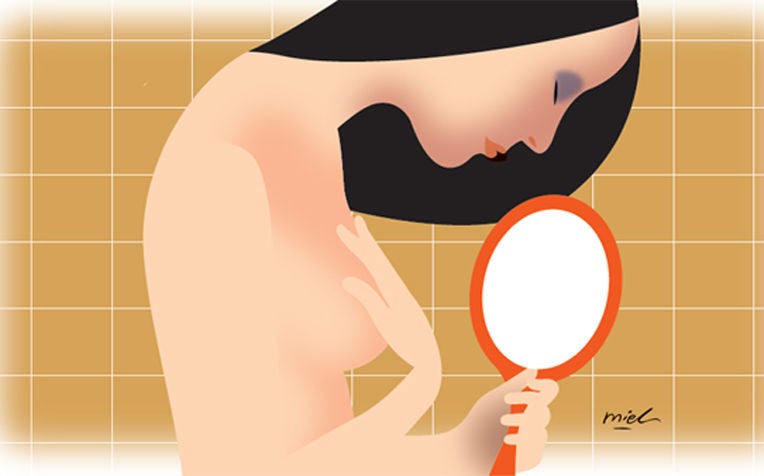
will tailor-make a breast that looks natural and mirrors the unaffected one.
“Doctor, can you really recreate my breast? How will it look?”
This was a question posed by Mrs X, who is in her mid-30s. She had been diagnosed with breast cancer and wanted to remove all cancerous tissue to increase her chances of recovery as her children were young.
Doctors had recommended removing her affected right breast– in a procedure known as a mastectomy– but she was worried about how her new breast would look.
Implicit in her questions are a few issues that have to be addressed.
Women who have breast cancer may feel their femininity and sexuality will be compromised when they have a mastectomy.
Many of them want to know how this will affect their role as a wife, mother and daughter.
In the past, large amounts of breast tissue are removed during a mastectomy. Today, less breast tissue is taken out and plastic surgeons reconstruct the breast at the same time.
I explained to Mrs X that I have reconstructed breasts for younger women. Most went home within a week, happy with their new breast. I assured her that care and support would be provided to her during all stages of her cancer journey.
Breast-care nurses will provide additional support until she is discharged from hospital.
To reduce her anxiety, I asked if she would like to speak to a breast cancer patient who had undergone breast reconstruction.
Some patients are more confident after talking to someone who has already gone through the same surgical experience.
As she was rather emotional and overwhelmed, I suggested seeing her three days later, so that she could gather her thoughts.
FORM AND FUNCTION
At the next appointment, Mrs X was more composed. She had received information from the nurses about the operation and also learnt of women who had positive results following breast reconstruction. She wanted to know how her reconstructed breast would look.
I reassured her that the aim was to create a breast that looks natural and mirrors her unaffected breast. If the unaffected breast needs aesthetic enhancement, it can be done at the same time.
As plastic surgeons specialising in breast surgery,we have to combine form, function and aesthetics to provide the best result for patients.
There is no “one size fits all” formula and the reconstruction is tailor-made to suit each person.
Several reconstructive options are usually available to patients like Mrs X. One method is to use implants, which come in a variety of shapes and sizes.
After taking measurements, an implant can be chosen to match the unaffected breast. Inserting breast implants is a relatively quick process but as implants are made of foreign material, they may need to be changed every few years.
Alternatively, tissue from the patient’s back, abdomen or buttocks can be used to fill the void created by the mastectomy. This procedure usually takes longer and causes scarring to the area where the tissue was harvested from.
After careful consideration, Mrs X decided to use her own abdominal tissue. Most women prefer this procedure as it gives them a tummy tuck at the same time.
For women who need radiotherapy after surgery, tissue from the abdomen is typically more robust and resilient than implants.
Mrs X was relieved to hear that the reconstruction could be done at the same time as the mastectomy. She was concerned about the tummy scars, but these could be hidden by her undergarments.
Women who had a mastectomy done years ago can also opt for breast reconstruction. They could have decided against reconstruction or were unaware that reconstruction could be done at the same time as a mastectomy.
In these cases, the procedure will be similar to the reconstructive surgery that Mrs X opted for– with tissue from either the back, abdomen or buttocks.
These women can also opt for a different procedure where fat from the abdomen or thigh is removed via liposuction and then used to recreate a breast mound.
This typically requires repeat procedures and the patient may have to make a few hospital visits.
Of course, they can also consider implants if they do not want to use fat or tissue from their own body.
Mrs X’s surgery went smoothly. She had some pain in the first few days but this gradually faded. Her children were happy to see her recovering. Her husband took leave from work to watch over her every night.
Nurses taught Mrs X postsurgical care and how best to look after her reconstructed breast to minimise the risk of infection.
Physiotherapists taught her how to prevent the accumulation of mucus and secretions, to reduce the chances of a chest infection.
Mrs X made good progress and was up and about by the third day. Constant encouragement from her husband kept her spirits up. On the sixth day, she was discharged.
I saw her two weeks later to remove her stitches and she was happy with the appearance of her reconstructed breast. She was also pleased with her flatter tummy.
Women typically need to wait six months to a year for the swelling in the new breast to subside before undergoing a reconstruction of the nipple and areola, which are removed along with the cancerous tissue during a mastectomy.
Mrs X is now back to her daily routine and plans to have her nipple and areola reconstructed next year. For now, she is contented to be able to fulfil her role as a wife, mother and daughter.














 Get it on Google Play
Get it on Google Play